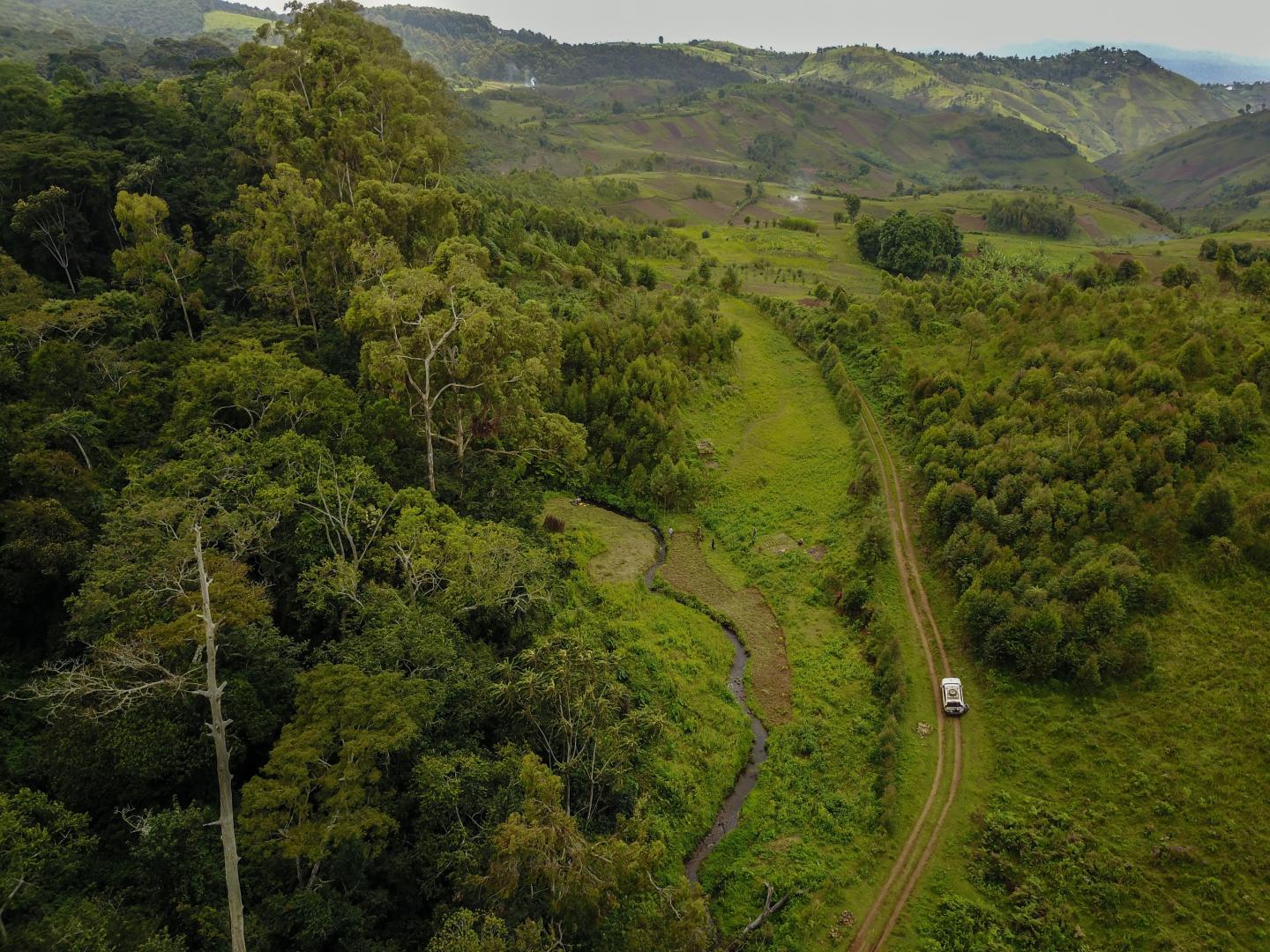
Credit: Rob Spencer
Thousand-year-old tropical soil unearthed by accelerating deforestation and agriculture land use could be unleashing carbon dioxide into the atmosphere, according to a new study from researchers at Florida State University.
In an investigation of 19 sites in the eastern Democratic Republic of the Congo, researchers discovered that heavily deforested areas leach organic carbon that is significantly older and more biodegradable than the organic carbon leached from densely forested regions.
Released from deeper soil horizons and leached by rain into waterways, that older, chemically unstable organic carbon is eventually consumed by stream-dwelling microbes, which devour the rich compounds and respire carbon dioxide back into the atmosphere. It’s a process that could jeopardize local ecosystems and further fuel the greenhouse effect, researchers said.
“In many ways, this is similar to what happened in the Mississippi River Basin 100 years ago, and in the Amazon more recently,” said study author Rob Spencer, an associate professor in FSU’s Department of Earth, Ocean and Atmospheric Science. “The Congo is now facing conversion of pristine lands for agriculture. We want to know what that could mean for the carbon cycle.”
While the broader effects of deforestation on the carbon cycle are well known, researchers said their findings, published today in the journal Nature Geoscience, suggest there is an additional pathway or leakage of carbon into rivers from soil churned by deforestation and land conversion.
“At this point, it’s hard to know the magnitude of this flux and thus the relative importance of this process compared to other anthropogenic sources of CO2, but it is likely to grow with additional deforestation and land-use conversion,” said former FSU postdoctoral researcher Travis Drake, the study’s lead author. “We hope this paper stimulates more research into the relative importance of this process.”
To better distinguish the different soils in their study, researchers analyzed the dissolved organic carbon drained from study sites into outflowing streams and rivers. Using ultrahigh-resolution mass spectrometry data generated by cutting-edge tools at the FSU-headquartered National High Magnetic Field Laboratory, the team found that the older dissolved organics discharged from deforested areas were more energy-rich and chemically diverse than those from better-preserved forests
Overall, forested areas released significantly more dissolved organic carbon than deforested areas. But the dissolved organics that did emanate from the deforested and land-converted regions were exceptionally biolabile, or suited for microbial consumption.
“Compositionally, the dissolved organics from deforested landscapes were full of the kinds of things microbes prefer to eat — simpler and easily accessible compounds with plenty of nitrogen,” said Drake, who now conducts research at the Swiss Federal Institute of Technology in Zürich. “We think the microbial consumption of these old organics coming from soils may partially explain the higher concentrations of CO2 we observed in the deforested area streams.”
In developing tropical regions like the Congo, deforestation-related soil disturbance has the potential to dramatically increase leaching of organic carbon by rainfall. That loss of organic matter could compromise soil fertility and reduce the downstream transport of critical nutrients that support aquatic and coastal ecosystems.
More broadly, this process means carbon that was safely sequestered in the Earth for millennia could now be re-entering the modern carbon cycle. If, as researchers posit, that carbon is eventually released into the atmosphere as carbon dioxide, it could contribute to the greenhouse effect.
Researchers said these findings underscore the urgency of identifying the second- and third-order effects of deforestation, land conversion and the unchecked disturbance of deep, nutrient-rich soils in the tropics. While widespread and systematic forest preservation is the best antidote, the paper suggests less disruptive farming practices could help offset some of the destabilization.
“This research focuses on the Congo because the tropics are really at the forefront of agriculture-driven land-use conversion,” Spencer said.
“Ultimately, it depends on the preservation of forests that maintain and store carbon in soils over longer timescales,” Drake added. “When land-use conversion does occur, better practices such as terracing, use of buffer strips and application of organic residues could ameliorate some of the observed organic carbon leaching.”
###
Researchers from the Swiss Federal Institute of Technology, Université Catholique de Louvain in Belgium, Ghent University in Belgium, the Max Planck Institute for Biogeochemistry in Germany, the Lawrence Berkeley National Laboratory, The University of California, Irvine, the Université Catholique de Bukavu in the Democratic Republic of the Congo, and the Pontchartrain Institute for Environmental Sciences contributed to this study.
The research was funded by the Winchester Fund at FSU, the National Science Foundation, the Belgian Fund for Scientific Research, the European Research Council, and the European Union’s Horizon 2020 Research and Innovation Program.
Media Contact
Zack Boehm
[email protected]
Original Source
https:/
Related Journal Article
http://dx.




